Sustainable Mobility Matters—Summer 2024
This quarterly newsletter highlights recent projects, partnerships, and publications related to NREL’s sustainable mobility research.
Subscribe to receive this newsletter via email.
The Sustainable Transportation Transformation Is Gaining Momentum
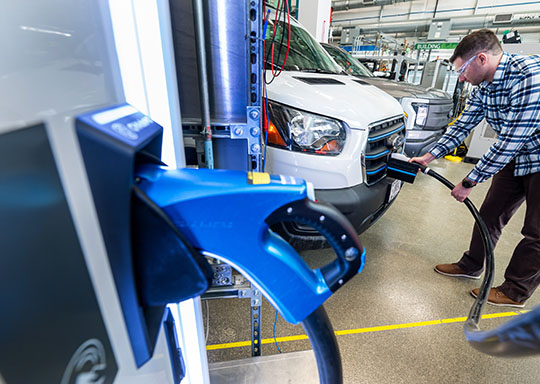
As a physicist (and an automotive engineer), I've always had great respect for momentum.
Thanks to Sir Isaac Newton, we know that a moving object will keep going in the same direction and at the same speed forever—unless a force acts to change it. This isn't just true of trucks and trains. It's true of the transformation of our transportation sector, too.
We've seen powerful momentum building behind the nation's efforts to decarbonize our transportation systems. Strong federal strategies, like the U.S. National Blueprint for Transportation Decarbonization, have pushed the nation in the right direction. Federal, state, and private investments in clean energy research, development, and deployment have increased the speed of the transition.
This momentum has grown even stronger with the removal of barriers. One by one, I'm seeing the world-class researchers of the National Renewable Energy Laboratory (NREL) addressing clean energy challenges and friction points.
Our researchers are tackling pain points at electric vehicle (EV) charging stations and making high-power EV charging stations safer and more reliable. Through technical assistance programs, we’re helping forward-thinking communities meet their goals of electrifying vehicle fleets and planning for robust charging infrastructure. On a national scale, our open-source modeling and simulation tools are helping to draw the contours of optimized EV charging networks, future electric grid upgrades, and domestic lithium-ion battery supply chains. That’s some serious momentum.
Because here's the thing: The strongest momentum is not created by a single event. It builds over time. Every time we remove a barrier to sustainable transportation systems, reinforce their direction, and accelerate their speed, we help that momentum grow—bringing us ever closer to the clean, affordable, accessible, and convenient transportation of the future.
Drive on,

Chris Gearhart
Director, NREL's Center for Integrated Mobility Sciences
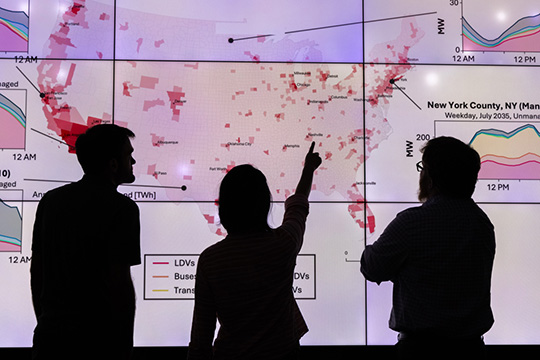
EVI-X Modeling Suite Accelerates Optimized Electric Vehicle Charging Infrastructure Deployments
NREL's EVI-X modeling suite of EV charging infrastructure analysis tools answers the most complex questions addressing every aspect of EV charging infrastructure—from network planning and site design to financial analysis—for every vehicle weight class and across geographic scales. It enables actionable insights at a never-before-seen level of detail and has helped inform billions of dollars in planned EV charging investments to ensure convenient, reliable, affordable, and equitable charging.
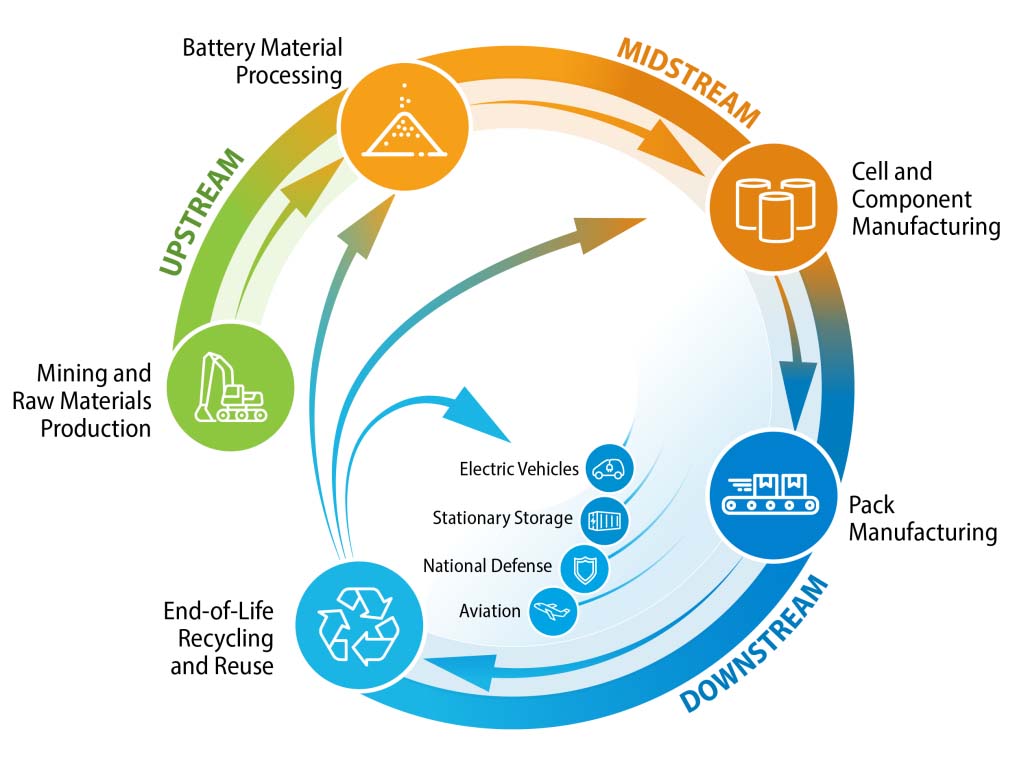
NREL Battery Supply Chain Database Paints a Picture of the North American Manufacturing Base
A strong domestic lithium-ion battery supply chain with increased availability of critical materials is important to support greater domestic manufacturing. NREL and NAATBatt International recently updated the Lithium-Ion Battery Supply Chain Database, an effort to scope the battery landscape. Updates include information about companies in the supply chain, an online version of the North American map of company locations, and filters to allow companies to identify others working in different parts of the supply chain.
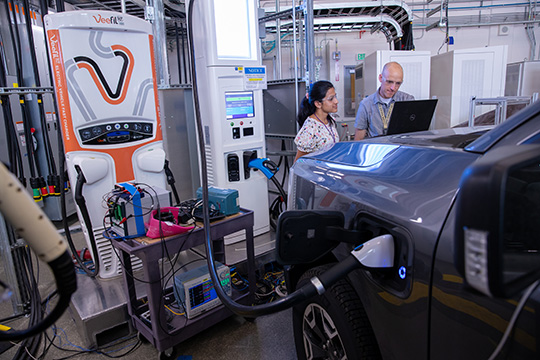
Next-Generation Profiles Project Makes Electric Vehicle High-Power Charging Safer and More Reliable
High-power charging is expected to help EV drivers spend less time charging, get back on the road faster, and travel longer distances. The U.S. Department of Energy’s Electric Vehicles at Scale (EVs@Scale) Consortium Next-Generation Profiles project conducts cutting-edge research to advance the state of EVs and EV supply equipment with high-power charging and benefit project partners. All high-level findings thus far are published in a new report series.
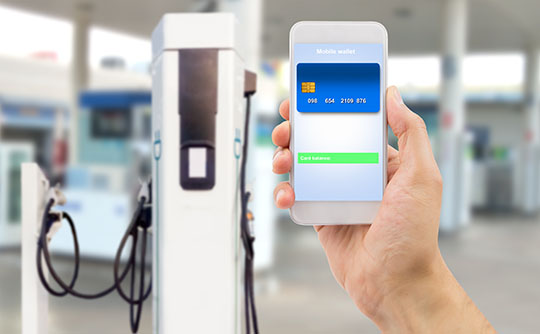
Report Targets Electric Vehicle Charging Payment Challenges and Offers Recommendations
A new report from NREL—alongside consortium partner Idaho National Laboratory—summarizes EV charging payment challenges and proposed solutions. EV charging should be accessible, convenient, and reliable. Payment issues affect both accessibility and reliability and can affect EV drivers' charging experiences. Addressing payment issues presents an opportunity for improvements that may speed along EV adoption and improve drivers' time with their EVs, keeping them on the road and not waiting at a charging station.
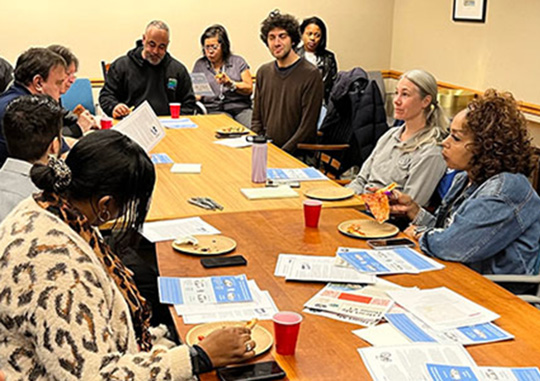
NREL-Led Clean Energy to Communities Expert Match Program Helps Communities Plan for Electric Vehicles
NREL helped communities in Michigan and Connecticut integrate EVs into county fleets and craft ordinances to permit EV charging stations. As part of the Clean Energy to Communities (C2C) Expert Match technical assistance offering, NREL and Argonne National Laboratory used NREL analysis tools and integrated on-the-ground knowledge from Clean Cities and Communities and Communities coalitions, building the communities' capacities to meet energy goals.

NREL's Open-Source Vehicle and Mobility Tools Aim for Reduced Transportation Energy Use and Emissions
For decades, NREL has developed open-source tools to benefit the transportation sector and accelerate the broader clean energy transition. Some tools—like the Advanced Locomotive Technology and Rail Infrastructure Optimization System (ALTRIOS), Future Automotive Systems Technology Simulator (FASTSim™), and Highly Integrated Vehicle Ecosystem Simulation Framework (HIVE™)—target decarbonization and energy efficiency. Others—like NREL's Open Platform for Agile Trip Heuristics (OpenPATH™) and the Route Energy Prediction Model (RouteE)—help predict or track energy consumption while traveling. Because this type of software is so customizable, it allows users to gear tools to meet their unique needs and to answer their specific questions, while also providing a common framework for automakers, regulators, and other research entities to share and validate each other's work.
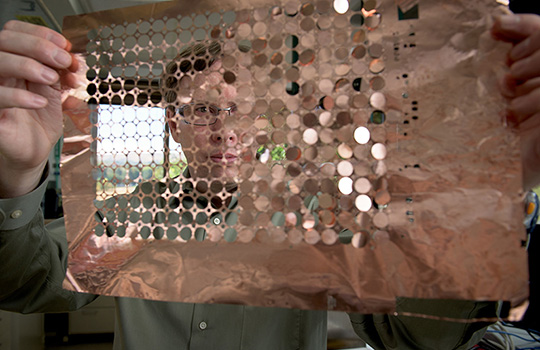
Short-Circuiting on Purpose: How NREL-Licensed Tech Continues To Make a Difference in Space
As part of exhaustive equipment testing, NASA and NREL created a device that causes an internal short circuit inside the layers of a battery cell, intentionally corrupting the cell by melting a thin layer of wax and forcing test cells to fail at a precise time and location within the cell. This R&D 100 Award-winning device from 2016 is still crucial today, allowing NASA to meet its stringent battery safety requirements, and can be used to test EV or grid batteries as well. This is essential for testing batteries in the International Space Station, the Artemis missions to the moon, and future missions to Mars.
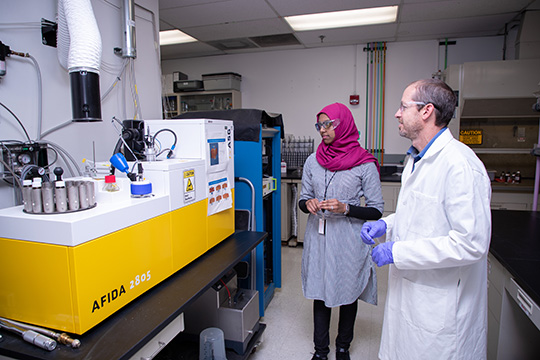
NREL Biofuels Research Guides the Pursuit of Sustainable Vehicle Fuels
NREL fuels and combustion researchers, in partnership with ExxonMobil, published two papers detailing research into the properties of a new type of biofuel. NREL's partners wanted to know whether the new fuel had advantages relative to conventional biodiesel. Through experiments and chemical kinetic modeling, the researchers discovered that the new fuel met quality and reliability standards, with many superior properties. The analysis helps inform decisions targeting fuel design and production.
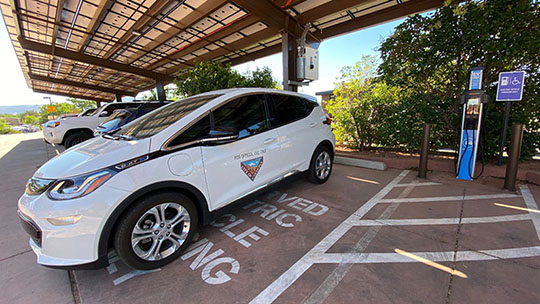
Arizona City Gets Electric Vehicle Charging Guidance Through Clean Energy to Communities Peer-Learning Cohort
The city of Sedona, Arizona, and 14 other entities recently received tailored expert advice on strategically expanding their EV charger installation efforts through a U.S. Department of Energy C2C program peer-learning cohort. NREL provided tools and resources to help Sedona's municipal leaders identify funding opportunities and explore best practices for EV-friendly city codes. NREL also paired Sedona with their nearby Clean Cities and Communities and Communities coalition, a partnership of the U.S. Department of Energy's Vehicle Technologies Office, to build regional and national connections.
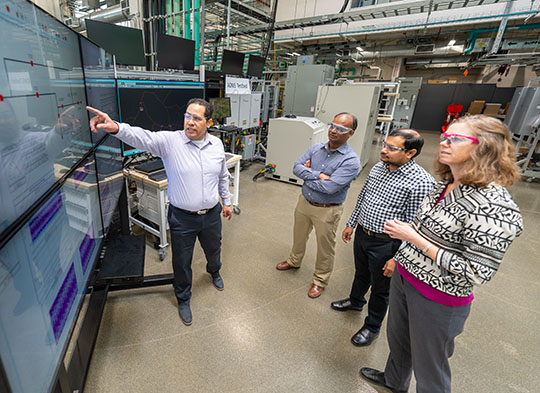
NREL Partners With Industry Leaders To Prove Out Grid Integration Solutions
Two utility companies will be using NREL’s premier capability for grid control research, the Advanced Distribution Management System Test Bed, to validate forward-looking solutions for charging vehicles and improving service for the community. Colorado Springs Utilities and Dominion Energy were both selected to demonstrate ways distribution utilities can adapt as more of their customers drive and charge EVs, adding load to the grid.
Get To Know Our Team: Andrew Meintz

A conversation with Andrew Meintz, NREL's chief engineer for electric vehicle charging and grid integration research.
What does your work focus on?
I provide strategic oversight for the lab's electric vehicle charging and grid integration research, with a focus on developing and evaluating integrated systems connecting EVs, charging infrastructure, power grids, buildings, storage, and renewable energy sources.
Some of my activities include examining opportunities and impacts associated with a full range of charging technologies—from home-based Level 1 charging to megawatt-scale fast charging for on- and off-road heavy vehicles. This body of work aims to enable a more adaptive, renewable, and resilient electric grid to accelerate the adoption of electric vehicles at scale. Toward this goal, I also chair the U.S. Department of Energy's EVs@Scale Consortium.
What single mobility challenge would you say we need to prioritize in the next 5 years?
Significant infrastructure research and deployment are needed to establish a flexible grid that enables low-cost, low-impact charging for electric vehicles to access wherever they are, whenever they need it.
Can you share a defining moment in your research career?
When I was a Ph.D. student, I took on a project to support a collegiate competition for charging and learned how to build a plug-in hybrid fuel cell vehicle. It was my first foray into EV work as an electrical engineer.
What piece of research are you most proud of conducting?
The work we did for the development of a megawatt charging connector (now the Megawatt Charging System [MCS]) was very noteworthy because it involved multiple stakeholders across the industry. I'm hopeful that it will play a major role in accelerating the development of megawatt charging to remove source emissions from heavy vehicles.
Must Reads
New Simulation Tool Helps Stakeholders Plan for Electrified Aircraft
Emerging aircraft, like electric vertical takeoff and landing vehicles, promise flexibility,
improved mobility, and lower emissions, but questions remain about their energy consequences.
Check out the latest fact sheet on NREL's Aviation Energy Research and Operation Simulator, a flexible, user-friendly, and accurate tool to rapidly screen and validate technology
designs across a range of scenarios.
EVs@Scale Reflects on Another Year of Innovative Research and Development
In its second year, the EVs@Scale Laboratory Consortium continued to bring together
national laboratories and key stakeholders to conduct infrastructure R&D to address
challenges and barriers for high-power EV charging infrastructure, enabling greater
safety, grid operation reliability, and consumer confidence. Read about the consortium's
accomplishments across vehicle-grid integration, smart charge management, cyber-physical
security, and more in the U.S. Department of Energy EVs@Scale Fiscal Year 2023 Year in Review.
New Tool Simplifies, Significantly Speeds Up the Electric Vehicle Infrastructure Planning
Process for Federal Fleets
After visiting nearly 100 federal sites to assess requirements for EV charging stations,
NREL developed an interactive web tool—EVI-LOCATE: Electric Vehicle Infrastructure-Locally Optimized Charging Assessment
Tool and Estimator—to generate site layouts and cost estimates remotely. Read the Federal Energy Management Program's feature article to learn how the tool is being used to support federal EV charging station deployment.
Did You Know?
The American Council for an Energy-Efficient Economy (ACEEE) used data from the NREL-developed Mobility Energy Productivity (MEP) tool to inform the ACEEE 2024 City Clean Energy Scorecard, which analyzes efforts by the most populous U.S. cities to improve energy efficiency and reduce greenhouse gas emissions. The MEP tool measures how well residents can reach destinations in a convenient, cost-effective, and energy-efficient way. Many existing metrics quantify access to opportunities with travel time as the primary weighting factor but ignore other externalities, such as the energy consumption and cost of using a particular mode, which the MEP tool takes into account.
In the News
Is Electric Vehicle Charging Infrastructure Ready To Keep Up With Demand?
Consumer Affairs interviews Brennan Borlaug
EV charging infrastructure is rapidly being deployed around the country, with some
states having more charging stations available than others. The current pace of EV
charger build-out may need to increase to meet future demand.
The Greening of Planes, Trains and Automobiles
Knowable Magazine interviews Keith Wipke
The transportation fuel landscape is expanding and diversifying as replacements for
gasoline and diesel are being developed to power the energy transition. Researchers
and fuel producers are exploring new fuels to meet the unique operational needs of
road passenger vehicles, freight trucks, trains, ships, and airplanes.
Why Aren't We All Flying in Electric Planes? [video]
Deutsche Welle interviews Scott Cary
Scaling up electric aircraft is restricted by battery weight, current charging speeds
being too slow for busy airport settings, and long regulatory processes. But electric
aircraft could still solve part of aviation decarbonization by serving some short
cargo routes and remote communities that already use small aircraft for transport.
Read the NREL LinkedIn Blog Feature
Doug Arent, NREL's executive director of strategic public-private partnerships, wrote a blog post on insights from the 2024 Sustainable Aviation Energy Conference, co-convened and hosted by Dallas-Fort Worth International Airport and NREL. Read Doug's NREL LinkedIn blog for takeaways from the conference—and why NREL stands ready to be the trusted partner that provides research solutions needed for a sustainable aviation future.
Share
Last Updated Sept. 4, 2025
